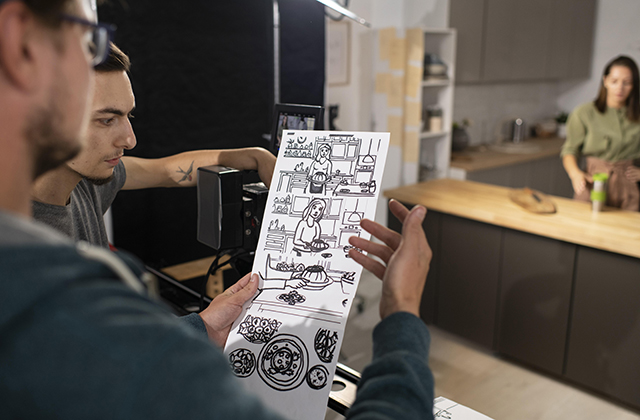
The Power of Storyboarding: Crafting Compelling Narratives
Introduction
Storytelling is an age-old art form that has captivated human imagination since the dawn of civilization. From ancient cave paintings to modern-day blockbusters, the way we share tales has evolved significantly. However, at the core of every great narrative lies a well-structured tv storyboard. A storyboard serves as the blueprint for bringing ideas to life, bridging the gap between imagination and reality. In this article, we’ll delve into the world of storyboarding and explore its power in crafting compelling narratives across various mediums.
1. Understanding Storyboarding
Storyboarding is a visual representation of a story, presented in a series of illustrations or images with accompanying descriptions or dialogue. It acts as a roadmap for filmmakers, animators, video game developers, and even writers, helping them organize their thoughts and visualize the narrative’s flow. Creating a storyboard allows storytellers to experiment with different sequences, camera angles, and character expressions, ensuring a coherent and engaging story.
2. Benefits of Storyboarding
2.1. Clarity and Communication: A storyboard allows the creator to communicate their vision clearly to the entire team. It serves as a common reference point, aligning everyone involved in the project and reducing misunderstandings.
2.2. Creative Visualization: Storyboards provide a canvas for creative exploration. Creators can experiment with various ideas and compositions, refining the story until it reaches its full potential.
2.3. Time and Cost Efficiency: By identifying potential issues and revisions early in the process, storyboarding can save both time and resources during production.
2.4. Storyboarding in Writing: Storyboarding isn’t exclusive to visual media; writers can also benefit from the technique. Outlining scenes and character arcs visually helps authors structure their novels or screenplays effectively.
3. The Storyboarding Process
3.1. Script or Idea Development: Before diving into the visuals, a well-crafted script or concept is essential. It serves as the foundation upon which the storyboard is built.
3.2. Thumbnail Sketches: Initial rough sketches, often called thumbnail sketches, are created to outline the main scenes and shots. These quick drawings are essential for establishing the storyboard’s overall composition.
3.3. Refinement: The storyboard is then fleshed out, with more detailed drawings and accompanying notes describing the actions, dialogue, and camera movements for each shot.
3.4. Storyboard Review: It’s crucial to review the storyboard with the team and gather feedback. Collaborative input ensures that everyone is on the same page and strengthens the final product.
4. Storyboarding for Different Mediums
4.1. Film and Animation: In film and animation, storyboarding is vital for pre-visualizing complex scenes, setting the mood, and understanding the pacing of the story.
4.2. Video Games: Storyboards for video games help designers plan gameplay sequences, character interactions, and level designs.
4.3. Advertising and Marketing: Storyboarding plays a crucial role in crafting engaging advertisements, allowing advertisers to communicate their message effectively.
5. Embracing the Journey
While storyboarding is a powerful tool, it’s essential to remain flexible during the creative process. As ideas evolve, so should the storyboard. Embrace the journey of storytelling, as the beauty of the craft lies in its ability to surprise and captivate both creators and audiences alike.
Conclusion
Storyboarding is a fundamental pillar of storytelling, providing creators with the means to bring their visions to life. From traditional filmmaking to cutting-edge animation and even written narratives, storyboarding empowers artists and writers to shape their ideas, engage audiences, and leave a lasting impact. So, whether you’re a seasoned filmmaker or an aspiring writer, embrace the power of storyboarding and unleash the magic of compelling storytelling. Find out how to empower artist for storyboarding.